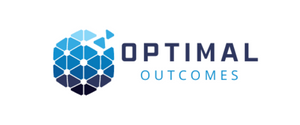Tel: 650-980-4870
Blog

Detection
The cybersecurity landscape is constantly evolving, and staying ahead of the curve is crucial for companies to detect and prevent compromise. Here are some of the latest developments to consider:
Advanced Threat Detection (ATD):
Machine Learning (ML) and Artificial Intelligence (AI): These technologies are increasingly used to analyze network traffic, user behavior, and system logs for anomalies indicative of malicious activity. ML models can identify subtle patterns that traditional signature-based detection tools might miss.
Behavioral Profiling: By monitoring and analyzing user and system activity against established baselines, companies can flag deviations that could suggest compromise, such as unusual data access patterns or login attempts from unauthorized locations.
Endpoint Detection and Response (EDR): EDR solutions go beyond endpoint security by providing real-time monitoring and investigation capabilities on endpoints like laptops and servers. They can detect malicious processes, suspicious file activity, and unauthorized data exfiltration attempts.
Extended Detection and Response (XDR):
Unifying Data from Multiple Sources: XDR platforms aggregate data from across various security tools, including firewalls, network intrusion detection systems (NIDS), and endpoint security solutions, providing a holistic view of potential threats. This allows for better correlation of events and faster identification of attacks that might otherwise go unnoticed.
Automated Threat Hunting: XDR can automate threat hunting tasks, such as identifying suspicious user activity, malicious network connections, and data exfiltration attempts. This frees up security analysts to focus on more complex investigations and strategic planning.
Additional Developments:
Deception Technologies: Deploying honeypots and other deception tactics can lure attackers into revealing their tactics, techniques, and procedures (TTPs), allowing companies to gain valuable insights and improve their defenses.
Zero Trust Security: Moving away from the traditional network perimeter-based approach, zero trust security focuses on verifying the identity and authorization of every user and device accessing company resources, regardless of location.
Security Orchestration, Automation, and Response (SOAR): SOAR platforms automate manual security tasks, such as incident response workflows, vulnerability remediation, and user account provisioning. This improves efficiency and reduces the risk of human error.
Remember:
Implementing any new technology is only part of the solution. Effective cybersecurity requires a layered approach that combines technology, processes, and people.
Regular security awareness training for employees is crucial to prevent social engineering attacks and phishing attempts.
Maintaining a robust incident response plan helps in case of a breach, minimizing damage and downtime.
By staying informed about the latest developments and adopting a proactive approach to cybersecurity, companies can significantly improve their chances of detecting and preventing compromise.
Menu
Services
© Copyright 2023. Optimal Outcomes. All rights reserved.
